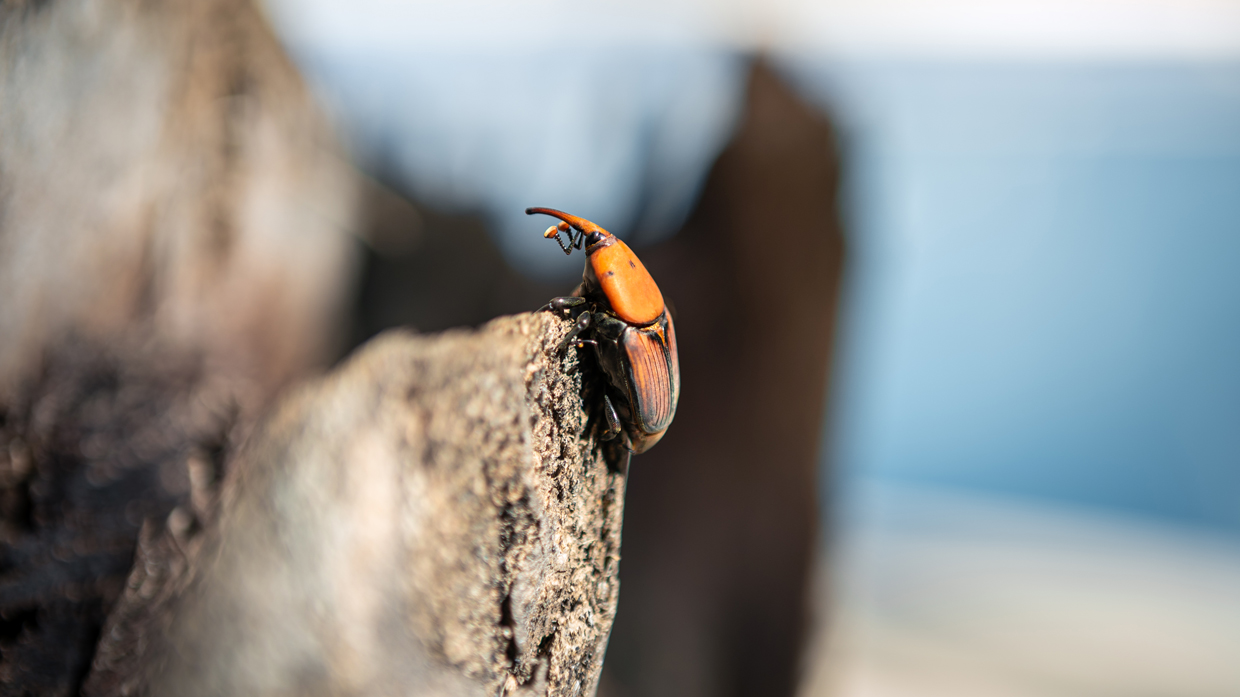
A palm weevil in the trunks of palm trees. A rusty red colour beetle is one species of snout beetle known as Rhynchophorus ferrugineus. Pest in palm plantations
The last thing anyone who works with palm trees wants to hear about is the possibility of a red palm weevil infestation. In fact, this beetle represents one of the greatest threats to the life of this species, as a result of its devastating effect.
However, the damage caused by red palm weevils to palm trees doesn’t come from the adult species, but from its larvae. In order to feed themselves, they eat the inside of the trunk and create cavities or holes. By the time this damage becomes visible to humans, the larvae will have been eating the inside of the tree for months, causing damage which cannot always be reversed. The hope is that they haven’t yet eaten the apical bud and that the palm tree will grow back, which is often the case if we act quickly enough.
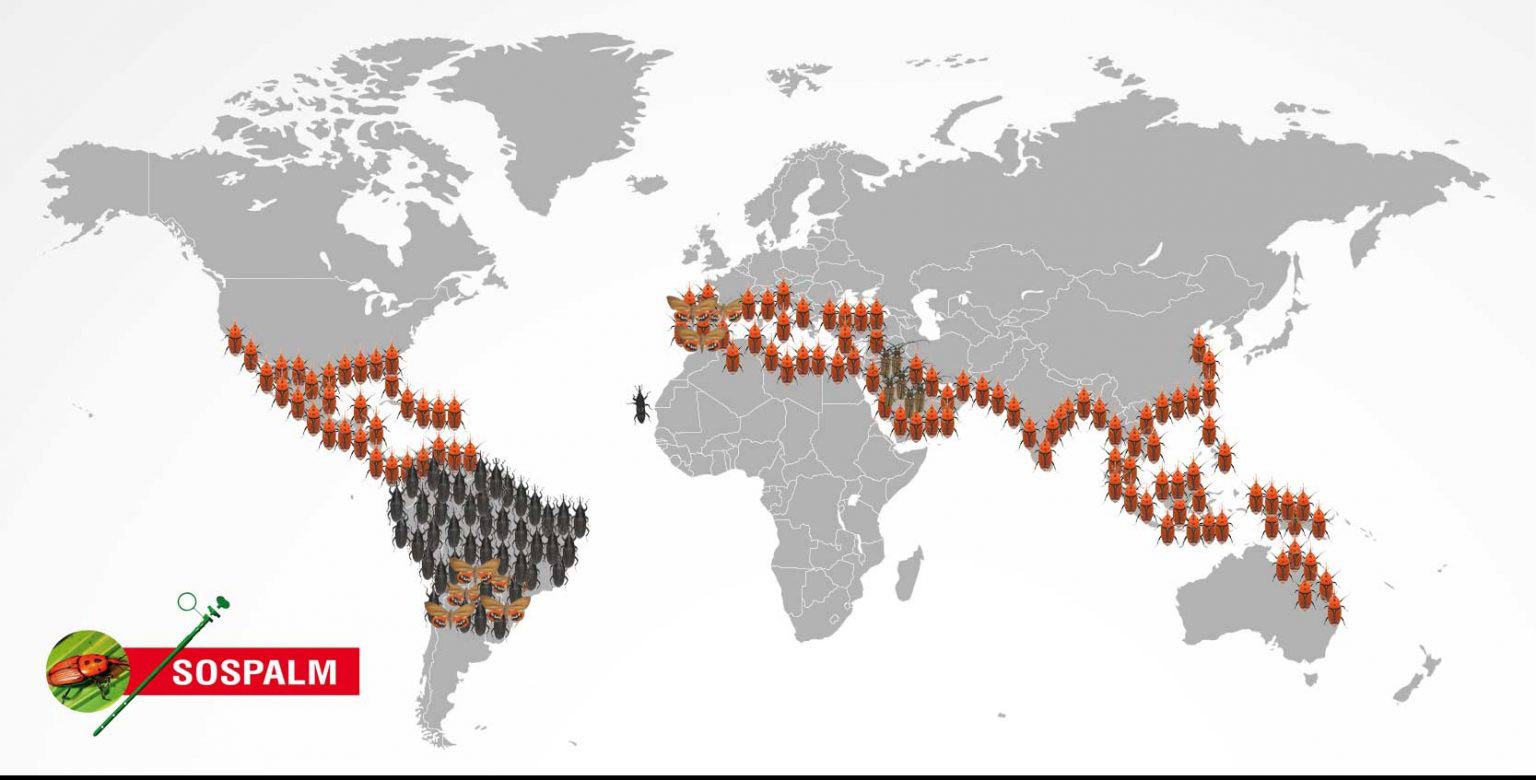
The red palm weevil or palm beetle is an invasive species in Europe, originating in south-east Asia. Its scientific name is Rhynchophorus ferrugineus. It has an elongated head, with a distinctive trunk. It is dark red or maroon in colour, with a few black dots or spots on the carapace.
When it comes to its larvae, they start as white, oval-shaped eggs – almost invisible to the naked eye. Each female lays between 300 and 400 eggs, deposited in the softest tissue of the palm tree, normally at the base of the crown, although in some species like date palms and fan palms, attacks are also common in the base and side.
Between two to five days later, this hatch and the larvae start to perforate the trunk. Inside, they find a tender tissue that is easy to ingest. The larvae live for between two to three weeks.
Next, they go through various pupal stages until the beetle emerges, which will live for four to six months. More specifically, its life cycle varies between 130 and 200 days, of which it will spend 45-90 in the full adult stage.
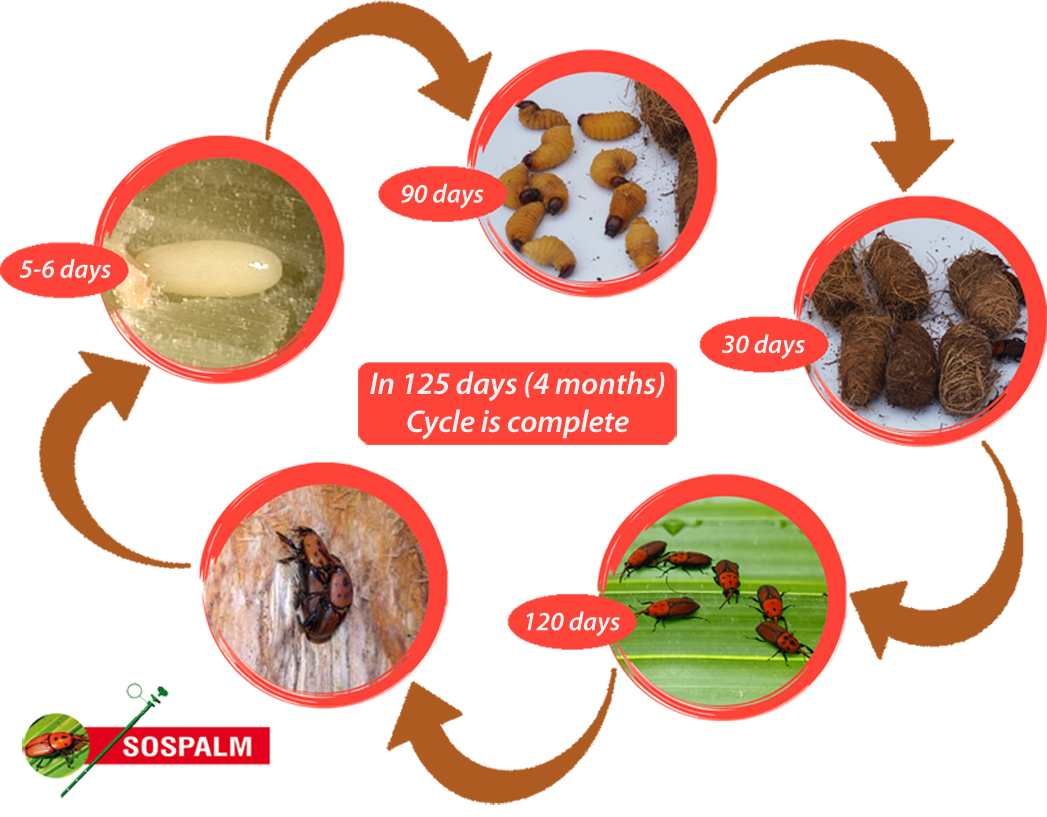
Detecting a red palm weevil infestation can be difficult (or, at least, detecting it early enough in the first stages of the attack) as there are very few signs. It is only between 8 and 12 months from the start of the infestation that we begin to see very clear symptoms.
At this point, certain aspects may hint at the presence of this pest, such as an asymmetrical crown and chewed or drooping leaves. Those used to growing and caring for palm trees will notice a lack of vitality. In addition, its heart will begin to weaken. On the other hand, holes may be observed from the passages dug out by larvae, and you might even see the remains of their cocoons.
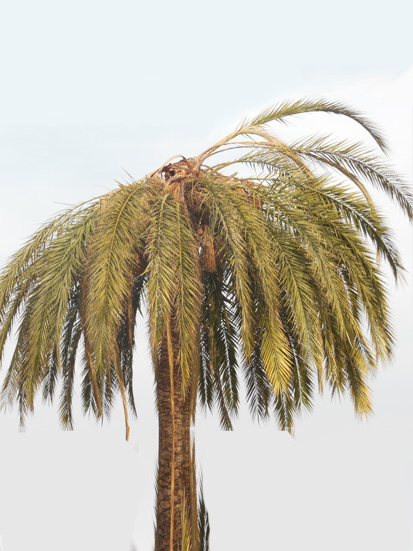
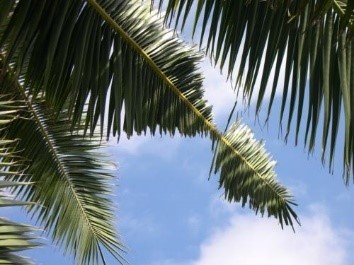
As such, preventive treatment is essential whenever red palm weevils are detected. Fighting an infestation of this beetle requires an effective treatment – the most effective of which available today is endotherapy. This consists in inserting a few pipettes into the palm tree, through which injections can be made throughout the year to prevent infestations or treat affected palm trees. We at Sospalm have years of experience applying this treatment.